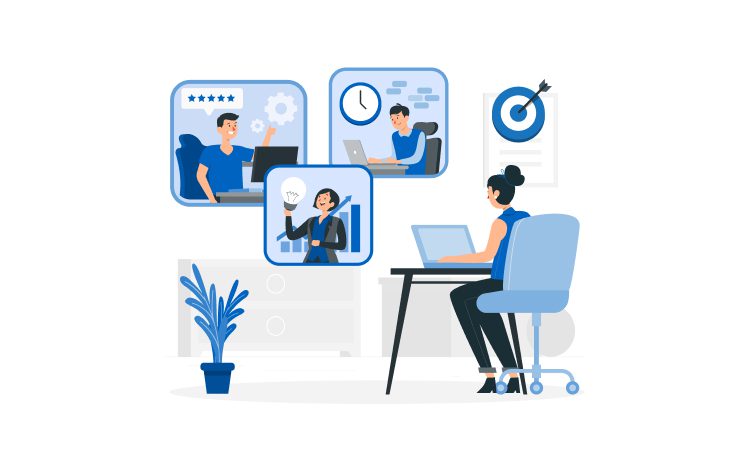
What are the Benefits of Microservices, and What Will They Bring to Your Business



According to the IBM Market Development & Insights, 56% of respondents are already implementing the microservices approach or plan to do so in the next two years. The same study predicts an 11% increase in the number of programs built using microservices over the next few years.
These figures show that this method of development is popular now and is unlikely to lose ground in the near future. Here, we will understand why microservice software architecture is called a real breakthrough in IT, why it prevails over a monolithic architecture, and what opportunities it opens up for your enterprise.
Content

Microservice architecture is a software design method based on the interaction of almost unrelated, small components: microservices. These modules are easy to modify, deploy independently, and scale autonomously. Therefore, it is quite logical that they have become widespread with the development of Agile and DevOps methodologies.
With the promise that microservices offer to IT teams, they have slowly begun to replace their predecessor, the monolithic approach. Programs created on this basis, up to a certain time, coped with the satisfaction of existing business needs. But they gave way to more advanced technologies, and businesses only benefited from this.
Research aimed at examining the success of applying microservice architecture shows that 55% of respondents rate their experience with microservices as successful, and another 37% say they have “some success” with this set of solutions.
What’s wrong with monoliths? Why 85% of large organizations with 5,000 or more employees already opting for microservices? Let’s talk about the weaknesses of monolithic architecture.
According to Gartner, the cost of network downtime is over $300,000 per hour.
So is it worth the risk?

Before talking about the advantages of this architecture, it is worth highlighting some of its characteristics:
These characteristics allow microservices to demonstrate the following advantages over monoliths:
Due to the autonomy of each module, a program created using a microservice architecture can be easily updated and optimized. Interference with other services is avoided. Moreover, the task of modifying a particular module can be delegated to a specific development team. It allows them to focus on a personal goal and not depend on others.
In 2008, the world-famous Netflix was faced with the need to optimize its services. The reason for this was a malfunction associated with the growing demand for the streaming service. The management decided to move to a cloud provider and change the monolithic architecture of its software to a microservice one. According to company management, the transformation has been a success:
Netflix streaming technology has come a long way over the past few years, and it feels great to finally not be constrained by the limitations we’ve previously faced.
Netflix streaming growth from 2007 to 2015
Thanks to the autonomous functioning of microservices, an error in one of them minimizes the possibility of errors in others. It allows such software to remain operational even if one of its modules fails.
Although the described architecture has a number of dependencies that can still cause software failures, developers have the ability to prevent cascading failures through:
Netflix has created an open-source solution, Hystrix, a kind of safety catch to control errors and delays in calls over the network. “Hystrix is a latency and fault tolerance library designed to isolate points of access to remote systems, services, and 3rd party libraries, stop cascading failure, and enable resilience in complex distributed systems where failure is inevitable,” is how its developers describe the product.
Not being tied to a specific tech stack allows you to adapt the app to the client’s needs and the skills of your IT team as much as possible. And the program is available to users on any device: on the iOS, Android or Mac platform. It is true for businesses in any consumer-oriented field.
For example, eBay used a monolithic approach to developing its services several decades ago but abandoned it in favor of a microservice one.
This architecture offers benefits for each business flow or domain by providing:
Consistent user experience across web and mobile native apps
Faster time-to-market for releasing business features across devices
“Reduce duplicate engineering work across devices”, – says eBay’s blog.
This diagram illustrates the company’s microservice architecture:
The use of secure APIs ensures the privacy of the data managed by each individual module. Additionally, being completely isolated from each other, the components do not have access to each other’s information. Thus, a hacker who hacked one microservice will not receive data from another.
This advantage is especially valuable in those business areas where programs contain confidential information. For example, financial or medical.
An example is the largest representative of e-commerce company Amazon. Amazon developers abandoned the monolith in favor of microservices and even created their own product: AWS (Amazone Web Services), which became so successful that it is now known worldwide as a commercial public cloud.
The architecture of microservices allows for faster creation and updating of programs. Module independence gives IT professionals the ability to make changes to the desired microservice without fear of code conflicts. And CI/ CD/CD enables the elimination of security threats and introduces new technologies into the product. It is very relevant in today’s world of rapidly changing business needs.
This advantage was discovered by the Uber. With the growing demand for their services, they needed to constantly improve their services to remain competitive. With a monolithic approach to development, this was problematic. Therefore, Uber switched to microservices. The result is obvious – today the company is one of the leaders in passenger transportation.
Creating app programs using microservices involves the work of a separate, cross-functional development team on each module. Each team in this work is focused on achieving its own goals up to the release of the product for use by the end-user. It increases the motivation and interest of developers.
An original approach to organizing teams for developing microservice apps was proposed by Amazon. It was called the Two-Pizza Team Rule and provides for a small number of developers – two pizzas should be enough to feed them. According to Amazon experts, it improves work efficiency, simplifies team management, and brings better results.
When comparing monolithic software and microservices, the latter almost always win. But do not forget about some of the difficulties that developers may encounter when moving to a microservice architecture.
Experienced development teams are able to nullify any difficulties with microservices implementation. Therefore, despite all the possible problems, microservices architecture is definitely worth considering, regardless of the scale of your activity.
Thus, the largest US company, Coca-Cola, with branches on all continents, abandoned a monolithic architecture that did not allow control over the activities of all subsidiaries. Whereas microservices were able to satisfy all the needs of a large business and even open up prospects for its development.
We have already talked about the benefits of microservice architecture from an IT perspective. It’s time to figure out what benefits microservices bring directly to the development of your company.
So, by moving to microservice software architecture, you get:
Due to the rapid evolution of business, new requirements for business services, and a new approach to software architecture are becoming more and more popular. According to Researchandmarkets, the cloud microservices market will reach $2,701.36 million in 2026. For comparison, it was $831.45 million in 2020. Do you want to stay in trend and adapt to your consumer, but don’t know where to start? Contact GloriumTech – our experts will create software for you based on the latest technologies.
Microservices are relevant for businesses of any size, as they help to make the workflow more efficient, increase the number of customers by increasing their loyalty and increase the profitability of the enterprise.
Microservice software does not have to be associated with the cloud. This association is solely due to the fact that microservices are a common architecture for modern programs, and cloud storage is a popular hosting.
Microservices are isolated from each other. Therefore, hacking one of them will not allow data to leak from others. Additionally, getting virus software into one of the modules does not mean “infection” of the others.








